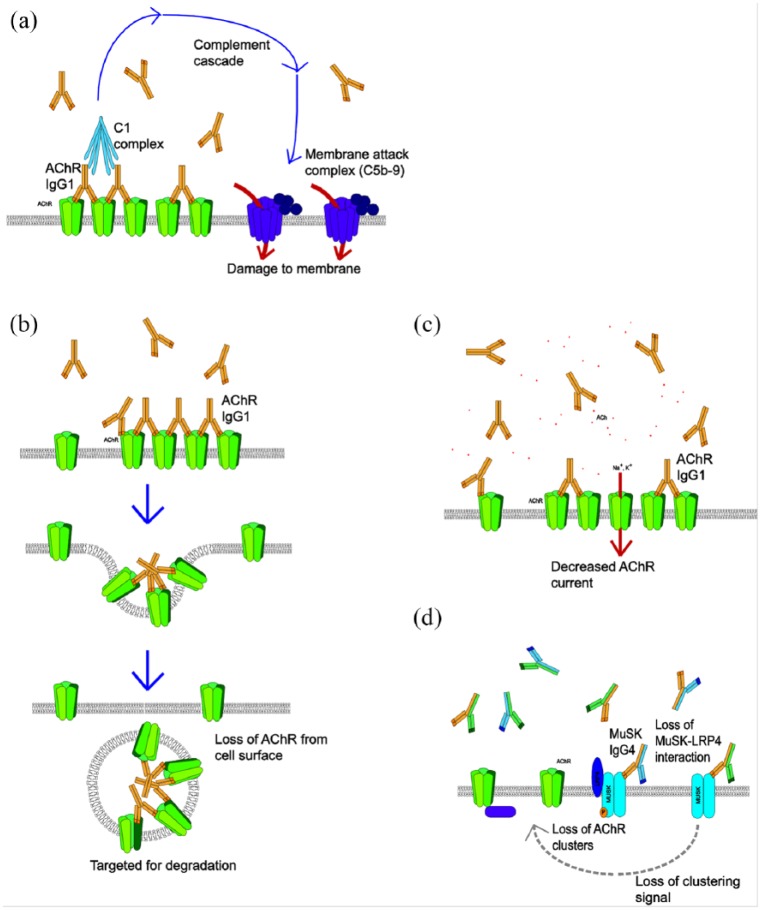Figure 1.
Common mechanisms of antibodies illustrated by AChR and MuSK antibodies at the neuromuscular junction. (a). Immunoglobulin G1 (IgG1) and IgG3 can bind to the AChRs and activate the complement cascade which leads to formation of the membrane attack complex, and local disruption of the postsynaptic membrane. (b) In addition, IgG1 and IgG3 crosslink antigenic targets, leading to internalisation and degradation of the antigen in lysosomes. (c) Less commonly, the antibodies are directed at the acetylcholine binding sites and can directly affect AChR channel function. (d) MuSK antibodies are different as they are mainly of the IgG4 subclass which is monovalent for binding to MuSK, does not activate complement or crosslink receptors. These antibodies inhibit the binding of low-density lipoprotein receptor-related protein 4 (LRP4) to MuSK resulting in impaired AChR clustering.

